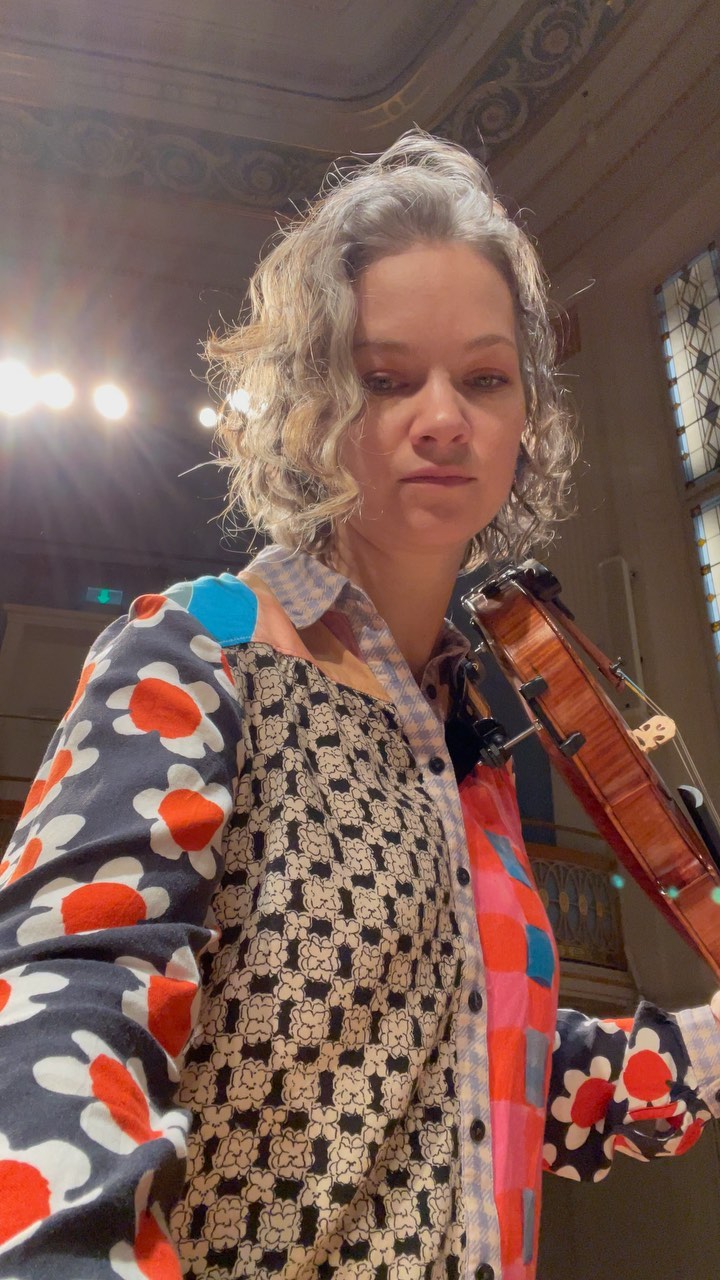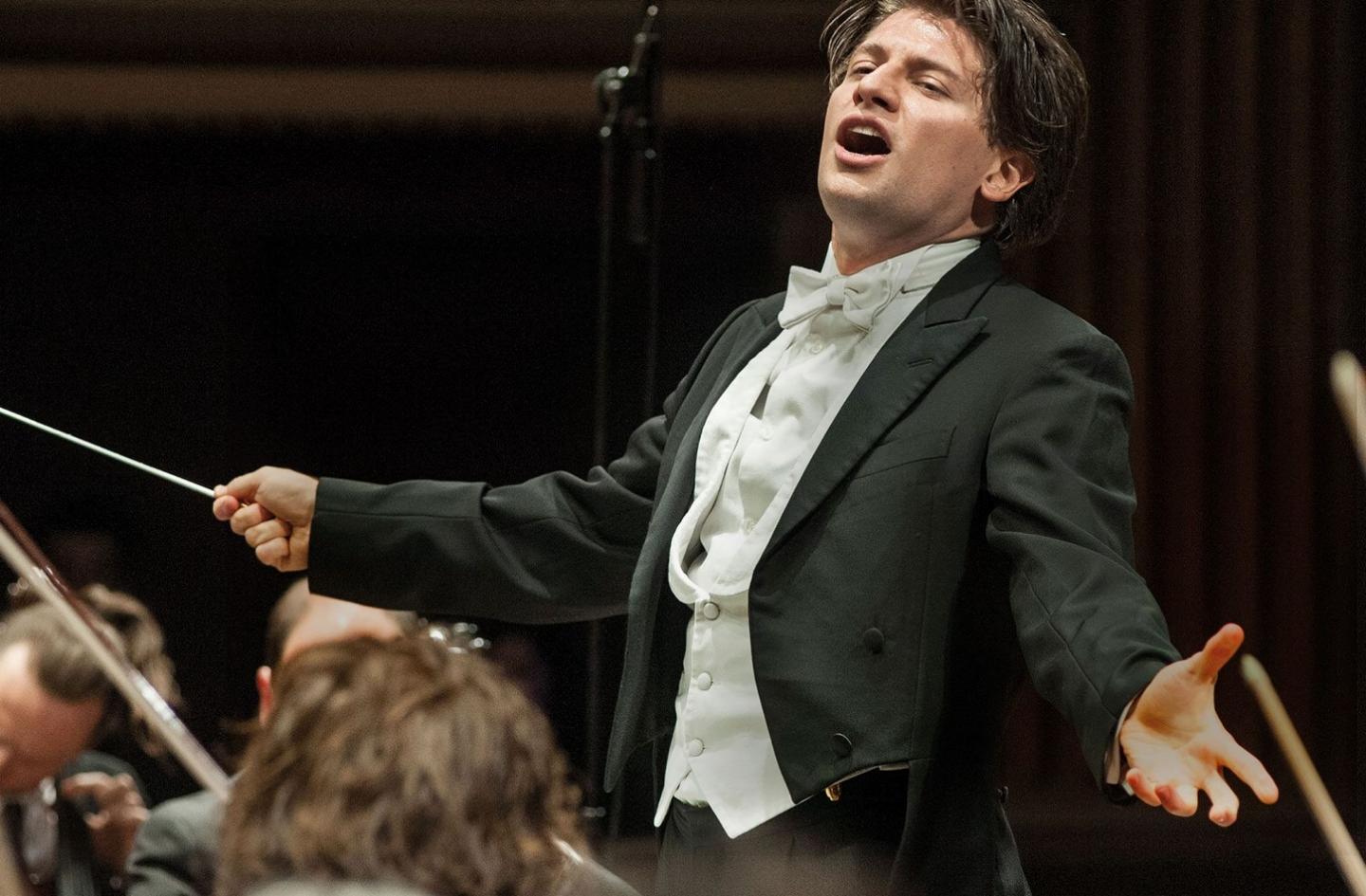Ever seen Shostakovich 5 without a conductor?
mainIt’s meat and drink for the Kaleidoscope Chamber Orchestra.

Viewer warning: The tempi are a bit on the safe side.

It’s meat and drink for the Kaleidoscope Chamber Orchestra.

Viewer warning: The tempi are a bit on the safe side.
The US violinist has announced she is still…

We gather that Juilliard has summarily fired a…

The Metropolitan Opera has appointed Daniele Rustioni as…

Amsterdam’s Royal Concertgebouw Orchestra has recruited its next…

Session expired
Please log in again. The login page will open in a new tab. After logging in you can close it and return to this page.
The intonation is extremely good!
Though Mahler4 is more immediately impressive : https://m.youtube.com/watch?v=ohqMwW1Loys
Yes, much better. Could it have something to do with the music?
Mahler 4 is more intimate/chamber music in feel so more suited to the forces? They find it easier to characterise whereas the Shostakovich hangs fire.
Yes, precisely. The fourth is the closest Mahler came to a ‘chamber’ symphony. There are no trombone parts; only one set of timpani and less percussion in general. There are only four horn parts, which is also true for the 7th and 9th symphonies. It does, however, require a top-notch woodwind section, but so too the Shostakovich. In addition, I know of at least two different reductions of Mahler 4, the most common being the Erwin Stein one. Your video isn’t one of those reductions, but simply Mahler’s own version with less strings (which I think is preferable, if you can get all the wind parts covered [as here]).
The fourth is a ‘transition’ symphony between Mahler’s early “Wunderhorn” period and his intense middle period (sometimes dubbed the “Ruckert” symphonies, but that’s a bit of a misnomer). The trumpet fanfare that begins the fifth symphony gets a ‘pre-echo’ here, at the climax of the first movement. Some people dub it a ‘neo classical’ symphony, which I guess is accurate by Mahlerian standards (that’s neither here nor there). The fourth movement requires a light soprano who can sound a bit ‘boyish’. In fact, Bernstein even used a boy treble in his Concertgebouw recording of the fourth. Mahler was quite fond of the fourth and it remains a personal favorite of mine (but the soprano part is crucial!).
There are, I think, three “chamber symphonies” by Shostakovich, which are – in reality – nothing more than light orchestrations of three of his string quartets by the conductor Rudolf Barshai. They work quite well, but the covers should read “Shostakovich/Barshai”.
There is no futzing around with the tempo. On the other hand, there is a lot of drama and big orchestra sound missing in this rendition.
Interesting. The performance lacks what you’d expect it to have: individualism.
Safe is one word. To me it almost sounds digitally sampled.
Individualism is precisely what one should NOT expect in a conductorless performance of a symphonic piece.
Probably a much smaller venue than normal, so no need to blow the roof off (fun as that might be).
An excellent lesson in how to take an extremely exciting work and completely erase all expression and tension. I’m sure that performing without a conductor is quite thrilling for the musicians, however for the listener it’s a net loss. If the KCO wants to make a strong argument for performing without a conductor, then they need to find another arena in which to be competitive: if they were experienced orchestra players, they might have a chance at delivering an exciting performance, however everything from nuanced tempo variations to correct phrasing is lacking. Performing without a conductor might be interesting for a community orchestra, but otherwise (with the exception of better intonation) this performance is on par with a high school orchestra.
Ah the joy of music making. They look like they’re having such a great time. Such feeling, such passion. So swept away are these young people by the music and the moment.
In France, Les Dissonances is an all-star orchestra (just look at their musicians’ resumes!), that plays without conductor. They’ve made great recordings of beethoven symphonies, schostakovitch concertos and symphonies, and even played last year in Paris the Rite of Spring. And they played it incredibly well.
Every musician was incredibly involved, and everyone approached the work with the same level of involvement as with a major chamber music work – matching articulations, listening/ leading, great energy. I’d never expected that, especially from something like Stravinsky’s ROT.
Not having a conductor doesn’t exactly make the work simple, but it makes sure that every musician is carefully involved, and with a good team, it can certainly make a magnificent concert.
Agreed.
I have heard some bloody good concerts by the Concertgebouw, the VPO and the BPO where there was a guy standing in front of the orchestra but also where nobody from the group took the time to look up at him during all the performance.
Vaughan Williams was a notoriously bad conductor. One day he was directing a rehearsal of one of his symphonies when he suddenly stopped the orchestra and glaring at the principal flute exclaimed: “What are you doing? If I’ve told you once I’ve told you a thousand times: Don’t look at me!”
The Aurora Orchestra do the conductorless thing at the Proms and elsewhere regularly and very successfully.
@Stephen Whitaker: I’m afraid you’re confusing two rather different things: playing from memory, and playing without a conductor. Aurora does the former, not (as far as I’m aware) the latter.
In fact at 10.15 pm on the ,6th of August they are going to perform the Shostakovich 9th.
Yes, I was going to ‘chime in’ and say that the 9th would be the other Shostakovich symphony that wouldn’t be too terrible difficult to perform, sans conductor.
The two that I can’t imagine anyone could ever possibly get worked out without the input/intervention of a conductor: the fourth and the fourteenth.
Quite to the contrary: about a year or two after the Fourteenth was completed, I personally saw and heard a truly fine performance of it by Leningrad Philharmonic musicians – absolutely without any conductor but led rather discreetly by the first-chair violinist Lazar Gozman. It is written for, and was performed by, two solo singers with nineteen string players and three percussionists – so certainly a chamber-sized group. By the way, it still remains one of my favorite of Shostakovich’s symphonies.
Well I’ll be. Thanks for the correction. It’s such a manic work, that I think the extreme tempo changes between movements would be difficult without a stick up front. Obviously not the case.
I like the 14th too, but the 15th is my favorite late Shostakovich work.
Of course it is difficult – for many reasons, including the participation of two vocal soloists – but apparently, when truly superb musicians are involved, it is not impossible!
Such a performance makes no sense when the piece is complex. In comparison, the smaller chamber orchestras are expected to play without a conductor because their repertoire allows it.
It is obviously a breathtaking “tour de force” for a group to achieve the result that we hear in this video, but something is missing; a sort of personal touch. Someone else above comments on the quality sounding almost digitally sampled, to which I agree.
Through years of experience and knowledge in learning scores, conductors acquire a maturity that allow them to become interpreters of what the composer had in mind when writing a work.
I shudder to think what will become of our maestri if this new trend starts picking up momentum.
Umm…the people playing the instruments can also “acquire a maturity that allow them to become interpreters”. The real point of the conductor is to help the musicians coordinate and balance their sound. Complex works really are much better for having a conductor, even if the conductor isn’t much good.
“Someone else above comments on the quality sounding almost digitally sampled” . .
? . . if it was recorded on a digital recorder, then it would, indeed, be digitally sampled.
“Through years of experience and knowledge in learning scores, conductors acquire a maturity that allow them to become interpreters of what the composer had in mind when writing a work” . . .
That’s what one hopes for, but that’s not always the case. Sometimes it’s far from being the case.
“I shudder to think what will become of our maestri if this new trend starts picking up momentum”
Plumbers and tree surgeons. There needs to be more competition in those trades, in the hopes of driving down the cost of hiring one of them.
Having played under a million conductors myself, I’ll go back to what Mahler called the late in his life: a necessary evil . . . (and Mahler was among the most ‘interventionist’ conductors ever, especially earlier on).